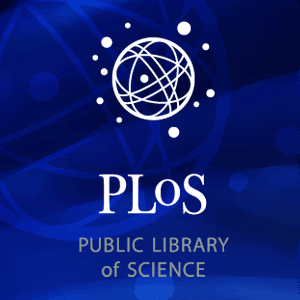Mother-infant bonds predicted by hormone levels in humans and other mammals

Image: "Mother's Love" by Kolongi Brathwaite
A common tactic by evolution deniers is to claim that if a complex behavior can’t be measured than the scientific method must be a flawed approach towards understanding the world. Nevermind that no one challenges the science of physics just because we can’t predict the complex motions of a leaf in a windstorm. But when it comes to matters of emotion somehow natural explanations are off limits. This is readily apparent in the common argument that, “if you think biology is such a good explanation of behavior, then prove that your mother loves you.” However, as it turns out, we can address this challenge of motherly love and demonstrate a plausible scientific explanation by measuring the levels of the important hormones involved.
Writing in the current issue of Psychological Science (subscription required), Ruth Feldman and colleagues at the Gonda Brain Research Center at Bar-Ilan University in Israel have found evidence that neuroendocrine levels of the hormone oxytocin is a strong predictor of a mother’s bond with her infant. By sampling the blood oxytocin levels of 62 pregnant women (of all educational and employment backgrounds) the researchers found that oxytocin levels remained consistent throughout their pregnancy but differed substantially between the women. By then analyzing video footage of the mothers’ interactions with their infants (which included analysis of how often they gazed at the infant’s face, their amount of affectionate touching, rocking, and how often they spoke in motherese to their child) the researchers found that levels of oxytocin was the major factor in predicting the levels of maternal bonding.
As the authors reported in their study:
The results suggest that the neuroendocrine system associated with bond formation in mammals may play a similar role in humans. OT [oxytocin] was found to be related to a well-defined cluster of maternal behaviors, attachment representations, and a specific maternal behavior that appears across mammalian species . . . These findings lend support to ethological and evolutionary perspectives on human bonding.

Macaque mother with nursing infant.
Image: Paula Bronstein/Getty Images
In other words, for all mammals there’s evidence that high levels of oxytocin translate into a feeling of personal attachment with their infant. Earlier studies on oxytocin have shown that the hormone is also involved in pair-bonding and cooperative behavior. For example in the closely related prairie and meadow voles, the former is a pair-bonded species that shows high levels of both maternal and paternal care while the latter are neither pair-bonded nor attentive to their offspring. Work carried out by Thomas Insel at Emory University has shown that oxytocin receptor density is the primary difference between the two species.
As to why some individual’s have high oxytocin levels and others don’t is still an open question. Research on primates and rats has shown that daughters who grew up feeling safe and secure with high levels of parental investment demonstrated the same parental behavior with their offspring. It’s likely that a safe and nurturing environment (with both economic and social support for the mother) would increase a mother’s oxytocin levels and could thereby increase the amount of maternal bonding.
However, it’s important to point out that there is not one “optimal” maternal behavior for all environments. Human mothers respond to their surroundings in the same way that other species do. Whether you’re a mouse living in desert landscape or a woman in an impoverished city center, if an environment is particularly harsh it may well be more adaptive for mothers to show less maternal bonding and thereby raise an infant who will be hardened for a difficult life. It’s also important to point out that while these results are highly significant, there is more than just chemistry that influences a mother’s love. We shouldn’t underemphasize the personal decisions or the cultural influences that a woman encounters that influence her maternal behavior. To do so would be to miss the larger picture and not show our full appreciation for the sacrifices that mothers make.
While many interactions are likely to be involved in maternal behavior (both hormonal and social), this study shows that a mother’s love can be partly quantified and predicted using the tools of the scientific method. More than a final retort to my hypothetical interrogator, what this study shows is how remarkably conservative and elegant the products of natural selection can be. To think that a single hormone is identical across mammalian species and can influence one of the most profound feelings imaginable is an awe inspiring thought. To cop a quote from Darwin himself, there truly is “grandeur in this view of life.”
Reference:
Ruth Feldman, Aron Weller, Orna Zagoory-Sharon and Ari Levine (2007). Evidence for a neuroendocrinological foundation of human affiliation: plasma oxytocin levels across pregnancy and the postpartum period predict mother-infant bonding. Psychological Science 18(11):965-970. doi:10.1111/j.1467-9280.2007.02010.x




















4 comments:
"By then analyzing video footage of the mothers’ interactions with their infants (which included analysis of how often they gazed at the infant’s face, their amount of affectionate touching, rocking, and how often they spoke in motherese to their child) the researchers found that levels of oxytocin was the major factor in predicting the levels of maternal bonding."
This is the point where they leaped from science into the realm of woo. They guessed the bond strength based on some preconception of which external expressions indicated what internal state with no chance ever of proving that. For all the researchers knew, the ones who gazed the most into their child's eyes were the ones who most thought they had a new barbie doll to play with.
The discrepancies in maternal bond were highly correlated with the mother's oxytocin levels. As I pointed out, other factors are likely involved as well (just as they are with other mammals). This research is the first to show that the close link between oxytocin and maternal bonds also applies to humans. I'd be happy to e-mail you the paper that cites the data and you can check the results for yourself if you like?
You wrote, "It’s likely that a safe and nurturing environment (with both economic and social support for the mother) would increase a mother’s oxytocin levels and could thereby increase the amount of maternal bonding."
There's evidence from rats that 1. pregnancy and labor increase the number of oxytocin receptors in the mother's brain, as well as their sensitivity. And 2. That a mother's nurturing influences the number of oxytocin receptors in the offspring's brain, as well as their sensitivity.
Champagne, Frances; Diorio, Josie; Sharma, Shakti and Meaney, Michael J., Naturally occurring variations in maternal behavior in the rat are associated with differences in estrogen-inducible central oxytocin receptors (PNAS October 23, 2001, vol. 98,| no. 22, pp. 12736-12741)
Being just a mother, I would say as i gaze at a newborn, we imprint our faces on the newborn and and then our teachings of how to engage and react to life. We enable the child to belong to this human race. It is a 'human' and so has to learn, as any baby, that its survival depends on making sure that it is tended through its dependant time and taught how to survive in its mothers world. Most do so, not by intelligence, but by love of having a child of their own. Succour is applied for the continuence. Most, if not all Mothers want their child to survive and so will make sure that it is afforded the needs of the system it lives in. Not so intelligently put, but I did try to explain the feeling of a Mother, any mother at the first sight of her 'child'.
Post a Comment